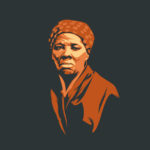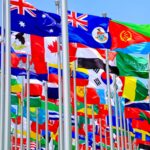National Women and Girls HIV/AIDS Awareness Day is observed annually on March 10. It is a day set aside to empower people globally, with knowledge and information regarding HIV/AIDS, with particular emphasis on the frequently unnoticed impact it has on women and girls. On this day, partners and supporters conduct events, participate in online campaigns and use their voices to educate other women and girls about HIV/AIDS prevention and care.
History of National Women and Girls HIV/AIDS Awareness Day
Human immunodeficiency viruses (HIV) are types of retroviruses that infect humans. They affect sick people by weakening their immune systems, making them more vulnerable to diseases and cancers that people with healthy immune systems can fight offHIV was first discovered in humans in the 20th century but is known to have originated in certain non-human primates such as chimpanzees and gorillas. Several theories of its genesis accept the existing knowledge of the HIV/SIV (simian immunodeficiency virus) phylogenetic relationships, as well as the fact that bushmeat was the most likely cause of the virus’s early transmission to humans.HIV can be spread through the exchange of a variety of bodily fluids between infected individuals, as well as from mother to child during pregnancy and delivery. Practicing safe sex and not sharing sharp items that could cut the skin are examples of behaviors and conditions that enhance the chance of contracting HIV and taking precautions against them.All around the world, people living with HIV/AIDS are regularly stigmatized and discriminated against. However, numerous programs have been created to raise public awareness in order to diminish and eventually eliminate this trend.Since 2005, the U.S. Department of Health and Human Services’ Office on Women’s Health (O.W.H.) has coordinated and held an annual HIV/AIDS awareness day to bring federal and community organizations together to raise awareness, offer support, and share information about the importance of HIV/AIDS prevention, care, and treatment.
National Women and Girls HIV/AIDS Awareness Day timeline
The HIV-1 subgroup M emerges in Léopoldville in the Belgian Congo — now Kinshasa in the Democratic Republic of the Congo.
The human immunodeficiency virus and the consequent Acquired Immunodeficiency Syndrome are both officially identified.
The newly found immunodeficiency virus, previously known as LAV (lymphadenopathy-associated virus) and HTLV-III, is named HIV.
The Treatment Action Campaign (TAC) is founded to focus on HIV/AIDS prevention and treatment approaches in South Africa.
National Women and Girls HIV/AIDS Awareness Day FAQs
How long does it take to die from AIDS?
There is no generalized time limit for how long someone living with HIV can live. However, depending on the drugs taken, the typical time from infection to death is eight to ten years.
What are the symptoms of AIDS in its final stages?
Frequent high fevers, white patches in the mouth, intense exhaustion, continuous coughing, breathing issues, and significant weight loss are just a few of the symptoms.
How many classes of antiretroviral drugs are there?
Approved antiretroviral (ARV) HIV drugs are divided into seven drug classes based on how each drug interferes with the HIV life cycle.
How to Observe National Women and Girls HIV/AIDS Awareness Day
-
Spread Awareness
Make use of both physical and digital media to educate girls and women about HIV prevention. You’ll be able to help a lot of people as a result of this.
-
Support women and girls living with HIV/AIDS
Do you know someone or a group of girls and women who are HIV-positive? Then, in whatever way you can, provide them your support — emotionally, financially, and so on. It will go a long way toward assisting them in coping.
-
Provide free testing
The majority of people are unaware of their HIV status. Make testing available to as many of them as possible, either as an individual or as part of an organization.
5 Facts About HIV/AIDS That Will Intrigue You
-
It is a deadly disease
Since its discovery, HIV has claimed over 35 million lives and remains a major global public health issue.
-
It has no known cure
Currently, HIV cannot be cured but antiretroviral treatment can control the effect of the virus, allowing people with HIV to live long and healthy lives.
-
It has killed notable celebrities
Freddie Mercury, a British musician and lead singer of Queen was among the numerous celebrities whose lives were cut short by HIV.
-
It was firstly called GRID
When HIV was discovered, it was initially referred to as Gay-related immune deficiency (GRID) due to the incorrect idea that it only afflicted gay individuals.
-
It has a conspiracy theory
According to the Soviet propaganda operation, HIV was created by the U.S. government as a bioweapon.
Why National Women and Girls HIV/AIDS Awareness Day is Important
-
It helps stem the spread
The actions and activities of this day of awareness will result in a significant decrease in the rate at which HIV is contracted. In the long run, this is beneficial to everyone at large.
-
It raises hope in infected people
People living with HIV can live healthy lives with the right information and treatment. This day encourages affected people and teaches them how to live a decent life despite their circumstances.
-
It unites us for good
The day draws people from all walks of life together in solidarity for a good cause. Ultimately, it brings out the best in us as people and encourages us to work together more for the right reasons.
National Women and Girls HIV/AIDS Awareness Day dates
| Year | Date | Day |
|---|---|---|
| 2023 | March 10 | Friday |
| 2024 | March 10 | Sunday |
| 2025 | March 10 | Monday |
| 2026 | March 10 | Tuesday |
| 2027 | March 10 | Wednesday |










































